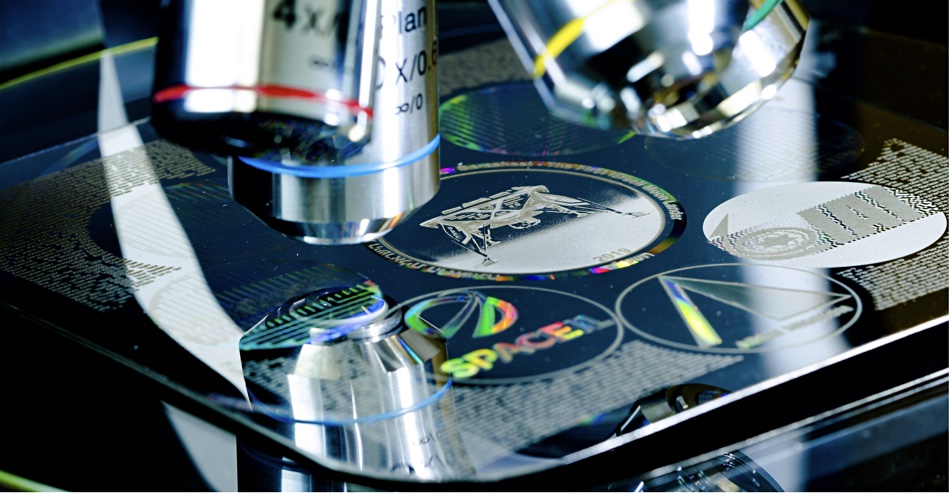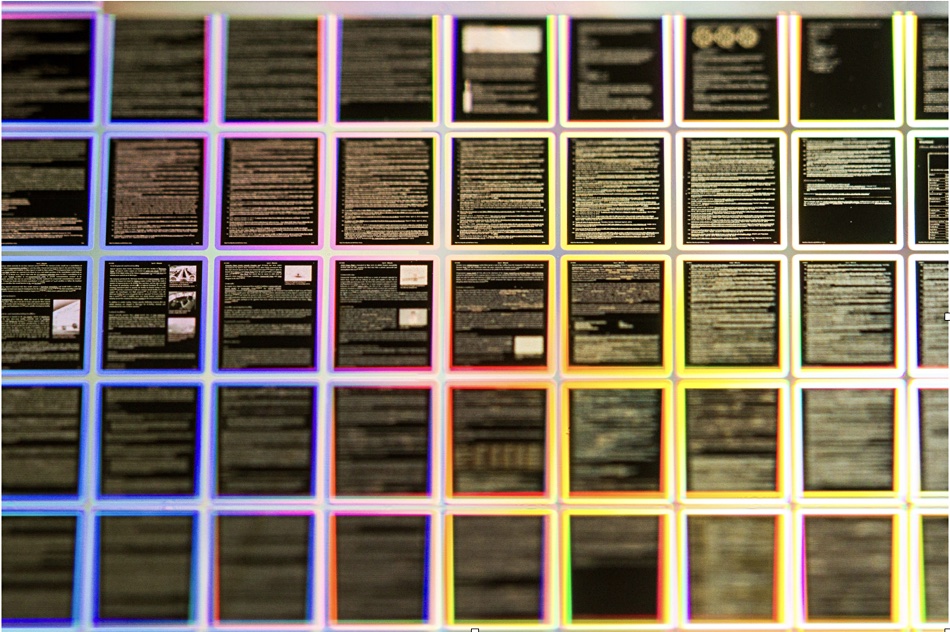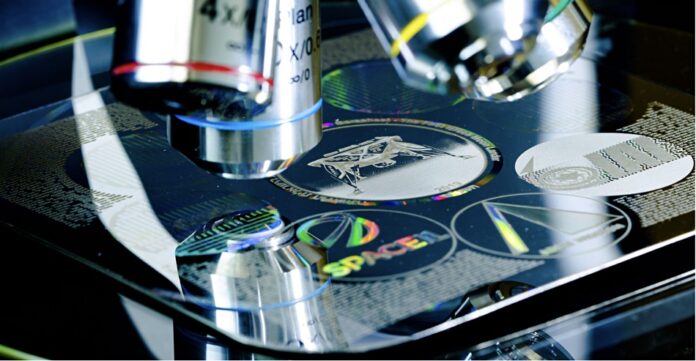The Arch Mission Foundation (AMF), a Los Angeles-based non-profit organization, has placed nickel-based Nanofiche disks on the Moon, creating an extraordinary cold analog/digital data archive library. The project aligns with their ambitious vision of maintaining a billion-year multi-planetary archive.
Update. Lunar library is a probable write off. See bootnote. 18 Sep 2023.
Founded by entrepreneurs Nova Spivak, Nick Slavin, and Matthew Hoerl, AMF aims to safeguard and disseminate human knowledge for future generations. The organization describes its mission as a contingency plan for humanity, designed to “to help humanity fulfill its purpose in the universe by preserving and transmitting our most important knowledge to the stars, via specialized archive devices called ‘Archs’ that are designed to spread and persist across vast distances of space and time.”
In 2018, AMF launched a quartz optical disk into orbit within the glove compartment of a Tesla car, a tactic that, while somewhat unconventional, was engineered with the use of 5G technology developed by researchers from the University of Southampton. As AMF explained: “The Roadster is the perfect place to put an Arch library so that it can be noticed and retrieved in the distant future.”
A year later, an Arch Lunar Library was crash landed on the Moon in the Beresheet lander. This archive, housed within a single 1mm-thick disk comparable to a standard 120mm DVD, was constructed from 25 nickel film layers, each 40 microns thick. Developed by NanoArchival, the library uses analog storage and includes a 30-million-page archive archive of human history and civilization, covering a comprehensive range of subjects, cultures, nations, languages, genres, and time periods.

Creating a nanofiche disk involves a multi-step process. First, data is etched into glass via laser at 300,000 dots per inch, then, the design is grown at an atomic scale in nickel through an electrodeposition process. The disk’s top four layers contain more than 60,000 pages viewable with a 150X to 200X magnification optical microscope, while the remaining 21 layers house 100GB of compressed digital archives, which can be decompressed to nearly 200GB. This compressed data forms the majority of the Lunar Library’s 30 million pages, with extraction specifications provided within the analog layers.

These digital layers include more than 100GB of compressed datasets that decompress to nearly 200GB of content. This comprises the text and XML of the English Wikipedia, along with tens of thousands of PDFs of books spanning various genres and fields. Further details are currently undisclosed, and AMF has yet to explain this decision.
AMF maintains that the nickel disk is resilient to a wide range of conditions, including electromagnetic radiation, extreme temperatures, and various biological and chemical agents, ensuring its longevity for millions of years. AFM has a Billion Year Archive vision: “An ultra long-term backup strategy to preserve the knowledge and biology of our planet across multiple Arch Libraries, replicated at multiple locations, around the solar system.”
While this venture is impressive and draws parallels with the Arctic World Archive Piql disks, it is a departure from typical digital archives. Financially endowed individuals and institutions may consider backing this ambitious project. However, the needs of everyday digital archives remain more modest – storing data securely for 25 to 50 years and ensuring quick, convenient access without the need for a lunar mission or a visit to a Svalbard coal mine. Future technologies, such as those being developed by Cerabyte, may bridge the gap between extreme data longevity and everyday read/write accessibility.
Bootnote
THe crash landing on the moon’s surface wrecked the Beresheet landing craft. According to Wikipedia: “The final telemetry reading indicated that at an altitude of 150 m (490 ft) the craft was still traveling at over 500 km/h (310 mph), resulting in a total loss on impact with the lunar surface.” But the Arch Mission Foundation believes its nanofiche disk could still be partially or even fully intact, somewhere amongst the Beresheet lander wreckage.








